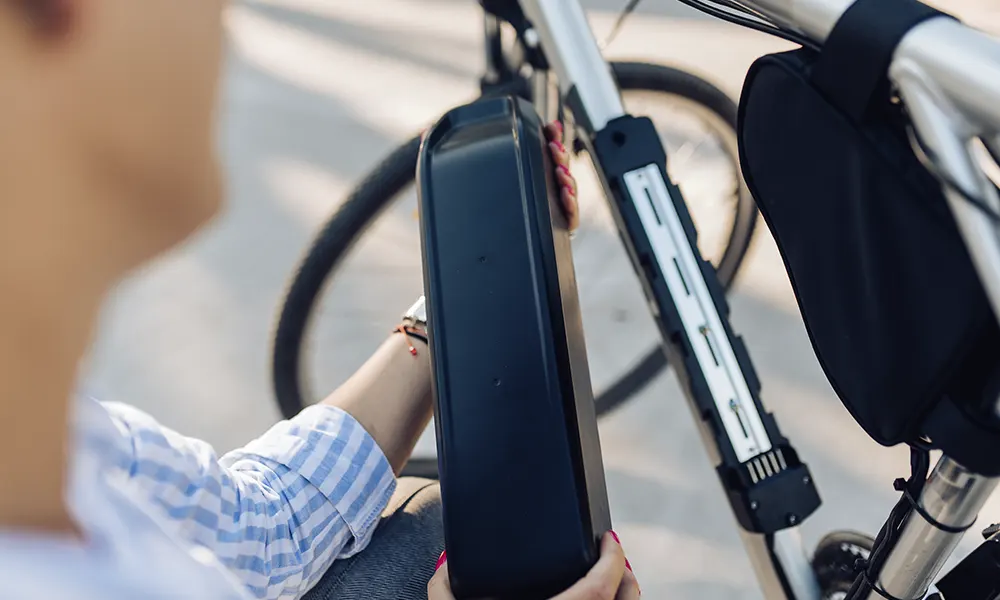CORRECT DISPOSAL OF E-BIKE BATTERIES
Here you can find out what you need to pay attention to when disposing of the e-bike battery.
An e-bike battery has a lifetime of around five years, or roughly 500 to 1'000 charge cycles. The aging process is affected by how the battery is cared for or stored and the number of charge cycles. If the power output is too low, the battery usually has to be disposed of. But just where and how is it recycled?
Lithium-ion batteries lose about 10 % of their capacity every year. It is impossible to put an exact figure on it though. Factors that influence the output include the chronological age (age from the date of production), the quality of the cells and the daily load. The return rate for battery disposal has so far been very low. Many e-bike owners presumably store batteries with a residual capacity of less than 60 % at home. Do you want to know how much output your battery has left? If so, have it checked by a specialist dealer (there may be a cost).


WHAT IS A CHARGE CYCLE?
A charge cycle is the process of discharging a battery and then fully charging it again. Incidentally, interruptions to charge cycles do not affect the battery. Lithium-ion batteries no longer suffer from the memory effect.
DISPOSING OF OLD BATTERIES
«Old and defective batteries may catch fire and must therefore be disposed of appropriately.»
Thanks to the advance recycling fee, you can simply return the old battery to a specialist dealer or dispose of it at a battery collection point. It doesn’t matter who made the e-bike or battery. Never dispose of batteries together with household waste. They contain environmentally harmful substances as well as valuable and rare metals that can be recycled. What’s more, old or defective batteries could catch fire as the battery fluid and voltage may cause a short circuit. Do you have a faulty battery? If so, you must contact your specialist dealer or the disposal point to arrange its transport using a special safety container. Do your bit to protect yourself, others and nature.
RECYCLING – REUSING VALUABLE RAW MATERIALS
The most common method of recovery is to burn and crush the batteries. Nickel, cobalt and copper are then recovered from the crushed material. These metals come from the conflict-ridden Congo, the main source of these rare raw materials, and are becoming increasingly scarce. Other raw materials such as lithium, graphite, aluminum and electrolyte still cannot be reused in most plants. Companies are investigating ways in which they can be recycled. One of them, a chemical company in Duesenfeld, Germany, has already made very good progress. 96 % of the battery components can already be given a new lease of life.
Find out what else you need to know about e-bike batteries in the following blog post:
19.01.2022

